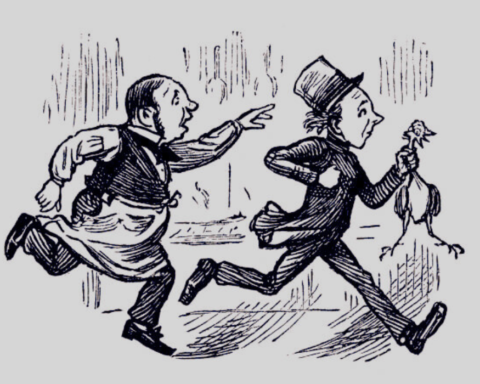Insects and jewelry, these two words just do not go together right? But what if we told you this was once quite a popular trend and people were eager to buy such jewelry and wear it?
Well, believe it or not, that is the truth and insect jewelry was the “it” thing during the Victorian era.
A little throwback
It was in 1891, Mrs. DeJones wore a beautiful piece of live jewelry, keyword live, that attracted many people. She tied a rope around a diamond to attach it to the bug and trained it to fly around her neck to form a chain.
Or at least that is the story we hear according to the Entomological News. But we would advise readers to take this piece with a pinch of salt, it may not be exactly what you are expecting.
The truth about insect jewelry
It may have not been true but was something certainly that was trending. It was in 1863, Godey’s Lady Book published a report that mentioned ornithological and entomological fevers.
It is said that this insect jewelry fever went on for a long time and women were expected to invest in it. People of the Victorian era thought that the trend had died down until 28 years later when Mrs. DeJones debuted her ever-famous beetle necklace.
Some trendy women took it one step further. They styled their hair with flickering fireflies or live beetles tied up in their hair like accessories.
Entomological News discussed the matters further by saying that new fashion trends were now being set against the backdrop of insects, of all the things. Just imagine, why would a Mexican bug be attached to a golden chain and people would call it to fashion?

The wings of golden weevils hung from the necklaces. The muesli outfits were embroidered with shiny green jewel beetles. Tiny golden scarabs were attached to artificial flower petals.
Moths were used as hairpins and even fake insects made of gold and silver were often used with springs attached to them to give them a more life-like look. They seemed to tremble with life.
Why was insect jewelry an obsession in the fashion world?
The fashion reflected the Victorian era’s constant obsession with natural history. As the Victorians separated from nature, they sought to rebuild the same kind of nature in their own homes. Cultivating ferns under crystal domes, raising frogs in glass tubes, etc.
These were all part of this bringing nature home obsession. To add to this national hobby was taxidermy. Victorian women learned to take animal carcasses, clean the bodies with arsenic, and organize them into festive poses to entertain guests.
In 1884, Montagu Brown of the Practical Taxidermy guide wrote that animal carcasses should not be thrown out. They should instead be used as sculptures to symbolize culture and art. They should be considered objects of beauty and happiness.
Through this magazine, the readers are encouraged to decorate themselves with natural insects and incorporate them into their accessories such as a brooch made from the head of a hummingbird, a beetle hanging from each ear, an owl claw with silver tips, which could be used as coat pin.
Of course, fashion has its bad sides. The satirical magazine Punch decided to take on a more humorous side of the outrageous fashion culture showing the caricatures of the modern woman as an insect monster.
The insect jewelry fashion trend connected Victorians with nature but also reached most areas of the British empire as well. Just like sugar, ivory, and chocolate, the British empire went head over heels for insect jewelry as well.
So much so that the high demand for insect jewelry led to the extinction of those specific species. And not just this, capitalism was taking over here too as the industry was built on the backs of hard-working laborers.
An English woman was surprised to visit Brazil because the air she saw was full of the creatures flying that were once only seen on pieces of jewelry.
According to her, it was as if a lady’s jewelry box had suddenly started to fly. If that is not an idea of a colonial mindset of an entire ecosystem captured just for the sake of fashion, then we do not what is.
Whatever it is, hope this trend does not start crawling all over the pace once again. No pun intended.
Politigory provides in-depth reviews of science, history, humanities, religion, social sciences and arts









